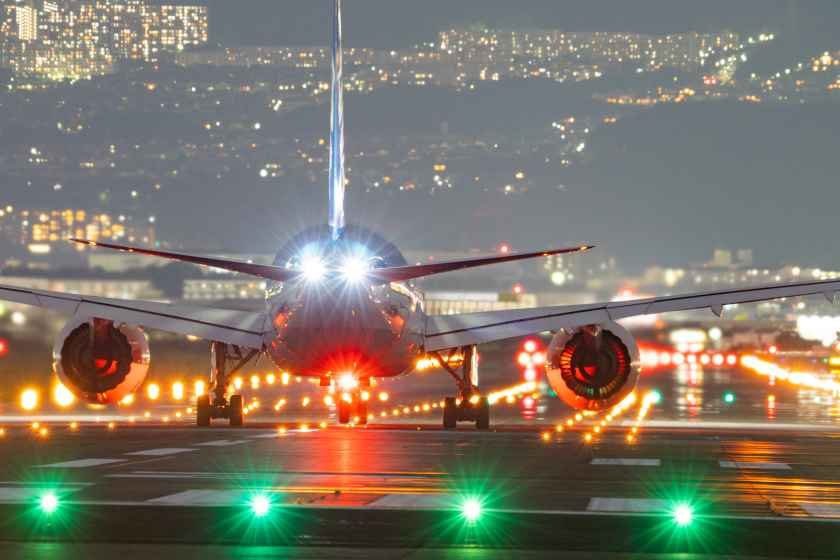Asia Travel Pulse
Kolkata’s Tourism Growth Soars with New Direct Flights to Bangkok and Singapore Collaboration

Friday, August 1, 2025
A new era of India-Southeast Asia travel is also on the horizon due to two important steps the launch of direct flights between Kolkata and Bangkok by Thai Vietjet Air and a year-long partnership between the Singapore Tourism Board and IndiGo airline. These activities will be key to promoting the connection of tourism and transportation in order to facilitate travel between the regions for both leisure and business travelers.
New Flights Between Kolkata and Bangkok There is no grand Indian cuisine in mind when planning a menu for a new flight service.
Low-cost carrier Vietjet’s Thai venture, Thai Vietjet Air, will start direct flights between Bangkok and Kolkata on November 16, 2025. In the beginning, the airline will offer four flights a week and the frequency of flights will be based on demand. This new service will offer a very attractive fare alternative for passengers travelling to Bangkok from Kolkata and adjoining areas, one of Southeast Asia’s most popular tourist destinations.
Bhubet Kittiyanpanya, the Deputy Head of Commercial at Thai Vietjet Air, focussed on the airline hoping to add more flights over time if demand proves high, with the possibility of daily flights in the future. This newly added route is expected to promote tourism and business between the two cities making travel from Bangalore to Bangkok easier for Indian tourists. Now with reasonable prices and convenient flight schedules, Thai Vietjet Air aims to have a better shot than some of its other competitors for the Thailand market.
The India Singapore market continues to be one of the key focus areas for Singapore Tourism Board and will continue to deepen our partnership with IndiGo to ensure that India remains capable of getting on board the flight with ready specials in hand wherever destination horizons might be difficult to cross. Singapore Tourism Board is the state body of the city state responsible for promoting tourism to the country.
A big new announcement alongside the launch of the flights is a yearlong collaboration between the Singapore Tourism Board (STB) and the IndiGo airline. The association will focus on positioning Singapore as one of the preferred travel spots in the region for both Indian leisure and business travelers. Through this, we aim to stimulate access for visitors to Singapore and drive more bookings via IndiGo’s extensive network of services to India.
The joint venture will build on IndiGo’s extensive domestic network that will enable transfer traffic between several Indian cities and Changi Airport in Singapore. IndiGo flies daily to Singapore from Kolkata, providing regular exposure to this area. The collaboration is also aimed at attracting more Indians to visit Singapore, which is already one among the top tourist destination for Indian travelers.
One of the key markets for Singapore tourism has always been India. In the first half of 2025, over 500,000 Indian tourists visited Singapore. The renewed affiliation with IIT and the new collaboration with STB and IndiGo is expected to boost this figure, by encouraging more Indian travelers to experience Singapore’s rich tourism products, which range from its well-known shopping precincts, cultural attractions to iconic business venues.
As part of the collaboration, IndiGo will also place its business class product, known as IndiGoStretch, on services between Singapore and key Indian cities such as Delhi and Mumbai, with this set to begin on in August 2025. This is hoped to address the surging demand for higher quality travel experience, and to create some more comfort and convenience for business travelers.
Increased Tourism and Business Connectivity
The commencement of Thai Vietjet’s services and the collaboration of Singapore’s tourism board with IndiGo will improve aviation connectivity connecting India with Southeast Asia. These changes will increase options for those in Kolkata looking to travel abroad, particularly popular routes like Bangkok and Singapore. The new flight offerings aim to please casual holiday makers as well as encourage business travel, now that Southeast Asia is a key player in global business and trade.
The number of tourists visiting Thailand and Singapore has steadily increased over the years. The links below will also pave the way for Indian travelers to explore the cultural sites, bustling markets and stunning beaches of Thailand thanks to the convenience and affordability of direct flights from Kolkata to Bangkok. VA Singapore, one of the most developed countries in the world, business centers and leisure destinations, this lion city continues to woo Indian travelers in search of business as well as leisure.
Competitive pricing and a better experience have seen Thai Vietjet Air and IndiGo capitalize on increased traffic heading to Southeast Asia. India will also drive more MICE business as it is finally discovering what Southeast Asia has to offer for meetings and events, he said.
Strengthening Regional Ties
The progress between Thai Vietjet Air and Singapore tourism board together with IndiGo is a tactical move to build tourism between India and Southeast Asia across a wide network. Those projects are part of broader pattern of heightened connectivity in the region born out of a desire for cheaper and more accessible international travel. These partnerships are set to address an increasing demand in travel to new locations, as the tourism continues to rebound after the pandemic, and travelers are constantly seeking easier opportunities for travel.
Thailand and Singapore are core markets for tourism from the region and Indian travelers are significant for both countries. Low cost airlines, more flights and alliances are on the cards of both countries to welcome more Indian travelers in the next few years.
Tourism and business, and culture and investment, stand to benefit from enhanced connectivity between Kolkata and Bangkok- Singapore. The new aid and support reinforces an encouraging long term outlook for tourism out of India to the South East Asia region, with better access and good partnerships in place.
Conclusion
Introduction of new flights between Kolkata and Bangkok and the Singapore Tourism Board-IndiGo strategic partnership will change the face of tourism between India and Southeast Asian countries, the stakeholders feel. The under writing projects would boost traffic, encourage regional tourism and give more choices to tourists and business travelers. Amid growing demand for overseas travel, these developments would continue to make South East Asia an attractive destination for Indian tourists.
(Source: Thai Vietjet Air, Singapore Airlines and Indigo Airlines.)
Asia Travel Pulse
Sustainability Asia 2025: Pioneering Sustainable Tourism Practices in Asia

Saturday, August 2, 2025
The eagerly anticipated Sustainability Asia 2025 program, set to be held on October 14, 2025, in Singapore, will be a landmark event in shaping the future of sustainable tourism in Asia. This highly awaited gathering will bring together leaders from government bodies, international organizations, the private sector, and local communities to discuss strategies, innovations, and initiatives that aim to make tourism in Asia more environmentally friendly, socially responsible, and economically beneficial.
As one of the most diverse and rapidly growing tourism markets globally, Asia’s tourism sector is faced with significant challenges related to environmental sustainability, cultural preservation, and community impact. The Sustainability Asia 2025 program is a crucial opportunity for stakeholders across the region to collaborate, share ideas, and develop actionable solutions that ensure the future of tourism in Asia aligns with global sustainability goals.
Asia’s Growing Tourism and Sustainability Challenges
Asia has seen a massive influx of international visitors over the last few decades, with countries like Thailand, India, China, Japan, and Indonesia becoming top travel destinations. According to the United Nations World Tourism Organization, Asia-Pacific is one of the fastest-growing regions in terms of both inbound and outbound tourism. This rapid expansion has brought both opportunities and challenges.
While tourism is a key driver of economic growth in many Asian countries, it has also put immense pressure on local ecosystems, cultural heritage, and community well-being. Overcrowding in popular destinations, waste management issues, and the degradation of natural sites have become major concerns. Moreover, climate change has exacerbated these issues, further impacting the delicate balance between economic development and environmental preservation.
Given these challenges, there is a growing realization that tourism must evolve to become more sustainable. The Sustainability Asia 2025 program will serve as a platform to explore how the tourism sector can be part of the solution rather than the problem.
Key Objectives of the Sustainability Asia 2025 Program
The Sustainability Asia 2025 program will focus on several key objectives, each aimed at driving positive change in the tourism industry:
- Promoting Green Practices in Tourism
One of the core themes of the program will be promoting eco-friendly practices across the tourism value chain. From sustainable hotel operations to eco-tourism ventures and green transport options, the event will showcase best practices and innovative solutions that minimize the carbon footprint of tourism activities. A particular focus will be on renewable energy use, waste management, and water conservation in tourist destinations. - Building Partnerships for Responsible Tourism
Collaboration is essential for creating a more sustainable tourism model. The program will encourage partnerships between governments, businesses, and local communities. These partnerships will focus on ensuring that tourism benefits everyone, from local residents to visitors, by fostering a more inclusive and equitable tourism industry. - Preserving Cultural Heritage and Local Communities
In addition to environmental sustainability, the Sustainability Asia 2025 program will emphasize the importance of preserving cultural heritage. This includes promoting community-based tourism, where local people play an active role in managing and benefiting from tourism. Preserving cultural practices and traditions is vital in ensuring that tourism enhances rather than dilutes local cultures. - Leveraging Technology for Sustainability
Technology will play a pivotal role in the discussions at the event. From digital platforms that facilitate eco-friendly travel choices to innovations in sustainable infrastructure, the event will explore how technology can help the tourism industry become more sustainable. This includes exploring the potential of smart cities, data analytics for better resource management, and AI-driven solutions to minimize the environmental impact of travel. - Tourism as a Catalyst for Positive Change
Lastly, the program will focus on tourism’s role in promoting social responsibility. Beyond just economic gains, tourism has the potential to drive positive change in communities by fostering awareness about environmental issues and supporting local conservation efforts. The program will highlight initiatives where tourism has successfully supported environmental conservation, wildlife protection, and social initiatives.
Government and Industry Support: A Key to Sustainability
Governments in Asia are increasingly recognizing the importance of integrating sustainability into their tourism policies. Several countries, including Singapore, Thailand, and Japan, have already begun implementing policies that promote sustainable tourism. These include incentives for businesses to adopt green practices, restrictions on over-tourism in certain areas, and investment in conservation projects. The Sustainability Asia 2025 program will provide a forum for these governments to share their experiences and discuss the development of more comprehensive, region-wide policies.
For instance, Singapore’s Tourism Board has been at the forefront of promoting sustainable tourism through initiatives such as the Green Tourism Program, which encourages hotels and attractions to adopt eco-friendly practices. Thailand’s Ministry of Tourism and Sports is also heavily involved in promoting sustainable tourism, particularly through its “Sustainable Tourism Policy,” which aims to balance tourism growth with the preservation of the country’s natural and cultural resources.
The Sustainability Asia 2025 program will also feature private sector participation, with companies in the tourism and hospitality industries showcasing their efforts to operate sustainably. From airlines to hotel chains and tour operators, many businesses in the region are embracing sustainability as a core part of their operations. These companies will be on hand to share their initiatives, strategies, and insights into how they are reducing their environmental impact and enhancing the sustainability of their services.
The Impact on Tourism: A New Era for Responsible Travel
The Sustainability Asia 2025 program is poised to reshape tourism in the region by inspiring a new generation of responsible travelers. As sustainability becomes a growing priority for consumers, travelers are increasingly looking for destinations, experiences, and services that align with their values. The program will provide destinations with the tools and knowledge to attract this segment of conscious travelers, who are more likely to choose destinations that prioritize sustainability.
Destinations that embrace sustainable tourism will likely experience long-term benefits, including the preservation of their natural and cultural resources, improved quality of life for local communities, and enhanced resilience against the negative effects of over-tourism. Sustainable tourism can also create new job opportunities, particularly in rural and underserved areas, by promoting community-based tourism and local businesses.
For businesses in the tourism sector, adopting sustainable practices is no longer just a trend but a competitive necessity. Consumers are increasingly making travel decisions based on the environmental and social impact of their choices. As such, companies that adopt sustainable practices will gain a competitive edge, attracting not only environmentally conscious travelers but also investors who are increasingly looking to support businesses with responsible operations.
Conclusion: A Vision for the Future of Tourism in Asia
The Sustainability Asia 2025 program represents a pivotal moment for the tourism industry in Asia. As one of the most dynamic and diverse tourism regions in the world, Asia has the potential to lead the way in creating a sustainable future for travel. With the right mix of government policies, private sector innovation, and community engagement, the tourism industry can evolve into a powerful force for good—benefiting not only travelers but also the environment and local communities.
As the event approaches, all eyes will be on Singapore as a hub for the future of sustainable tourism in Asia. The discussions and partnerships forged at the Sustainability Asia 2025 program will undoubtedly influence the direction of tourism in the region for years to come, setting the stage for a greener, more responsible travel industry.
Asia Travel Pulse
Thailand Welcomes Tourists from America, Asia, Middle East, and Europe with Full Access and Year-Round Adventures

Saturday, August 2, 2025
Thailand is once again proving why it’s one of the world’s most loved destinations. In 2025, the country is open to travellers from Europe, Asia, the Middle East, and the Americas—offering smooth access, vibrant culture, and year-round adventures.
Whether you’re arriving by plane, train, or cruise ship, getting into Thailand is easier than ever. With over 140 airlines connecting global hubs to Bangkok, Phuket, and Chiang Mai, travellers can fly in comfortably from any part of the world. Malaysia offers rail links, and deep-sea ports welcome cruises from far and wide.
Once inside the country, tourists enjoy full mobility. All domestic flights, trains, buses, highways, and ferries are running without disruption. You can explore misty mountains in the north or sun-kissed islands in the south—any time of year.
Thailand’s five regions remain open and welcoming. Even during the green season, nature shines. Waterfalls flow, rice paddies glow, and fresh air fills every trail.
Add to that world-class hospitality, strong safety measures, and easy city travel through metros and boats, and you get a destination that truly delivers on the promise of comfort, connection, and adventure—no matter where you’re coming from.
A Warm Thai Welcome Awaits Every Visitor
Famous for its rich traditions and tropical beauty, Thailand offers a travel experience like no other. Whether it’s the smiles of local vendors or the peaceful temples tucked in green valleys, the country knows how to make travellers feel at home. Recognised by travel publications worldwide, Thailand ranks as a year-round favourite thanks to its variety of attractions, commitment to safety, and smooth travel options.
As of now, there are no interruptions in transport. Domestic and international flights, long-distance buses, city metros, ferries, and highways are running smoothly. Airports, ports, and stations are fully operational, ensuring visitors can travel from north to south with complete ease.
Seamless Global Access to the Land of Smiles
Thailand remains highly connected to major cities around the world. More than 140 airlines operate regular routes to and from the country, offering thousands of weekly flights. Visitors from Asia, Europe, the Americas, and the Middle East can fly directly to Bangkok, Phuket, Chiang Mai, and more.
Thailand’s flagship carriers continue to offer world-class services, while regional and international connections make it easy to add Thailand to any travel plan. Those arriving overland via Malaysia or docking on cruise ships in ports like Laem Chabang and Phuket will find the process efficient and welcoming.
Travel Made Easy Inside Thailand
Once in Thailand, getting around is simple. The country’s infrastructure is modern, reliable, and designed for smooth navigation. Highways connect every region, making road trips and intercity travel comfortable. Trains operated by the State Railway of Thailand are being upgraded, with dual-track expansions and new routes improving speed and access to lesser-known gems.
Urban mobility is just as convenient. Bangkok’s BTS Skytrain, MRT subway, and public bus systems make exploring the capital quick and affordable. In coastal areas, travellers can hop on riverboats and ferries for a scenic journey along Thailand’s waterways.
Discover the Magic of All Five Regions
Thailand’s diverse regions offer something for everyone. In the north, misty mountains and cultural villages provide a serene escape. The south draws beach lovers with its turquoise seas and white sands. Central Thailand combines ancient cities with bustling modern life, while the northeast offers heritage and adventure. The east welcomes foodies, festival-goers, and offbeat travellers.
Even during the rainy season, Thailand shines. This “green season” brings lush landscapes, flowing waterfalls, and brilliant rice paddies. It’s a perfect time for those who love nature at its freshest.
Safety Is Always a Priority
Thailand continues to uphold high safety standards for its visitors. From hotel hygiene to travel advisories, everything is monitored in coordination with local authorities and tourism bodies. Tourist Police are stationed in all popular areas, providing multilingual help, travel guidance, and 24/7 support for any emergency.
Information booths, clear signs, and tourist support centres ensure that visitors can always find help when needed. Whether you’re navigating a busy market or heading into the mountains, you’re never far from assistance.
Why Thailand Is the Destination of the Year
In 2025, Thailand stands tall as a destination that offers more than just stunning views—it offers peace of mind, easy movement, and meaningful cultural encounters. The country’s commitment to accessibility, its dependable transport network, and the hospitality of its people make it a top pick for solo travellers, families, and groups.
From golden beaches and sacred temples to buzzing night markets and mountain retreats, Thailand has it all—and it’s fully ready to welcome you.
Whether you’re returning for the fifth time or discovering it for the first, Thailand promises a journey you’ll never forget. The welcome is warm, the roads are open, and the adventure is yours to create.
Asia Travel Pulse
India Powers Cross-Border Tourism With ASEAN As Visa Access And Connectivity Expand

Friday, August 1, 2025
India is driving a new era of cross-border tourism with ASEAN nations by easing visa access, expanding air connectivity, and fostering cultural and economic ties. This surge is fueled by simplified travel procedures, rising disposable incomes, and a growing appetite for experiential travel, making Southeast Asia more accessible than ever for Indian outbound tourists.
India’s accelerating outbound tourism is pushing Southeast Asian countries to reimagine their approach to attracting international visitors. As a growing number of Indian travelers choose destinations like Thailand, Vietnam, Malaysia, and Indonesia, ASEAN nations are stepping up by modernizing infrastructure, easing entry requirements, and expanding their digital presence. This transformation reflects more than just a push for higher tourist volumes—it marks a deeper shift in how regional travel is being curated, consumed, and customized for a new generation of travelers.
Southeast Asian countries now see India as a priority source market. They actively pursue Indian travelers through visa-free entry, expanded air connectivity, and targeted destination marketing. The Indian outbound travel boom—fueled by rising incomes, better aviation access, and greater digital adoption—is no longer speculative. It’s structural.
Indian Travelers Book Short, Plan Fast, and Go Digital
Today’s Indian traveler prefers spontaneity and digital convenience. Most book trips just one to two months before departure—far shorter than the lead times typical in Western markets. This change forces destinations to become more responsive. They need to offer late availability, flexible pricing, and seamless online booking systems to keep up.
These travelers also seek experiences beyond standard city tours or beach holidays. They explore offbeat paths, local cultures, and immersive stays. Demand for homestays, boutique lodgings, and serviced apartments has grown significantly. Indian tourists increasingly favor personal, community-led travel over traditional hotel stays. As a result, travel providers across Southeast Asia are revamping their offerings to include unique, localized options that go beyond mainstream attractions.
Thailand Leads the Charge, But Focus Shifts to Quality
Thailand remains a major beneficiary of India’s outbound tourism boom. In 2024, the country welcomed more than 2 million Indian visitors, attracted by its visa-free entry policy and well-established tourism ecosystem. However, the approach is evolving. Rather than focusing solely on increasing arrival numbers, Thailand—along with other ASEAN nations—is now prioritizing meaningful, high-quality travel experiences. The emphasis has shifted toward curated offerings that resonate with the changing expectations of Indian travelers, particularly the younger generation who prioritize affordability, customization, and seamless digital engagement.
This transformation is paving the way for a more flexible, immersive, and digitally empowered travel landscape. With Indian tourists increasingly influencing global outbound trends, the way Southeast Asia adapts will play a crucial role in shaping the region’s tourism growth over the coming decade.
ASEAN Responds With Investment and Innovation
Countries like Vietnam, Indonesia, and Malaysia are not staying behind. They are building new tourism infrastructure, expanding air routes, and tailoring experiences for the Indian market. From vegetarian food options to Hindi-speaking guides and digital wallets that work across borders, destinations are becoming more India-ready.
This responsiveness extends beyond leisure travel. Business, education, and wellness tourism between India and Southeast Asia are growing rapidly. Countries are positioning themselves as hubs for medical services, conferences, and study-abroad programs—segments increasingly popular with Indian travelers. Medical tourism, in particular, is gaining traction as travelers combine healthcare needs with hospitality and leisure.
Digital Platforms Help Small Players Thrive
The rise in Indian outbound travel is also democratizing opportunity across Southeast Asia’s tourism sector. Online travel platforms empower small-scale accommodation providers and tour operators to compete with larger players. These platforms offer training, visibility tools, and access to user-generated reviews—allowing even remote or lesser-known businesses to reach Indian tourists effectively.
This creates a more inclusive tourism economy, where local operators can thrive by delivering authentic experiences Indian travelers value. The ability to showcase uniqueness and local charm—through mobile-first platforms—gives small businesses an edge in a market that prioritizes customization over standardization.
Sustainability Becomes a Travel Priority
As Indian tourists become more conscious of environmental and social impacts, sustainability is rising on the agenda. Travelers want to see real action—not just greenwashing. Destinations that invest in waste management, renewable energy, and community-led tourism models are gaining favor.
Southeast Asian countries that integrate sustainability into their tourism strategies will likely enjoy long-term loyalty from Indian visitors. Experiences that include nature conservation, cultural preservation, and meaningful local engagement appeal to travelers seeking responsible and memorable journeys.
India: Not Just a Market, but a Travel Trendsetter
India is influencing not only where people travel, but how. Its mobile-led, experience-driven, review-dependent travel habits are shaping global tourism norms. Indian travelers have pushed Southeast Asian tourism providers to upgrade digital services, offer localized content, and adopt real-time pricing models.
In doing so, India is becoming a travel trendsetter. Its outbound tourists expect intuitive apps, easy digital payments, and tailored offers. In response, platforms are developing localized loyalty programs, improving user interfaces, and adapting content in Indian languages—all designed to convert interest into action across the ASEAN corridor.
Cross-Border Growth Brings Broader Opportunity
The strengthening India-ASEAN travel corridor presents opportunities beyond tourism. Airlines, fintech firms, and digital service providers now explore new ways to support this growing flow of cross-border movement. Payment solutions, loyalty integrations, and mobile-based services are evolving to support the demands of Indian travelers.
What’s emerging is not just a tourism shift—but a new cross-border travel economy. One where regional cooperation, digital integration, and traveler-centric innovation drive sustainable, long-term growth.
India is accelerating cross-border tourism with ASEAN through expanded visa access and stronger air connectivity, making Southeast Asia more reachable and attractive for Indian travelers seeking convenient and enriching experiences.
India’s surging outbound travel to Southeast Asia is reshaping the region’s tourism landscape. Fueled by a young population, expanding flight options, rising disposable income, and a strong preference for digital planning, this growth signals more than just an increase in arrivals. For ASEAN countries, the real potential lies in adapting their tourism products to meet the evolving needs of Indian travelers—who now prioritize customizable, immersive, and flexible experiences over conventional package tours and generic itineraries.
This shift is creating a more agile, experience-rich, and digitally connected tourism economy. As Indian travelers continue to shape the future of outbound tourism, Southeast Asia’s response will define the next decade of regional travel development.
-

 Brand Stories2 weeks ago
Brand Stories2 weeks agoBloom Hotels: A Modern Vision of Hospitality Redefining Travel
-

 Brand Stories7 days ago
Brand Stories7 days agoCheQin.ai sets a new standard for hotel booking with its AI capabilities: empowering travellers to bargain, choose the best, and book with clarity.
-

 Destinations & Things To Do2 weeks ago
Destinations & Things To Do2 weeks agoUntouched Destinations: Stunning Hidden Gems You Must Visit
-

 Destinations & Things To Do7 days ago
Destinations & Things To Do7 days agoThis Hidden Beach in India Glows at Night-But Only in One Secret Season
-

 AI in Travel2 weeks ago
AI in Travel2 weeks agoAI Travel Revolution: Must-Have Guide to the Best Experience
-

 Brand Stories4 weeks ago
Brand Stories4 weeks agoVoice AI Startup ElevenLabs Plans to Add Hubs Around the World
-

 Brand Stories3 weeks ago
Brand Stories3 weeks agoHow Elon Musk’s rogue Grok chatbot became a cautionary AI tale
-

 Asia Travel Pulse4 weeks ago
Asia Travel Pulse4 weeks agoLooking For Adventure In Asia? Here Are 7 Epic Destinations You Need To Experience At Least Once – Zee News
-

 AI in Travel4 weeks ago
AI in Travel4 weeks ago‘Will AI take my job?’ A trip to a Beijing fortune-telling bar to see what lies ahead | China
-

 Brand Stories4 weeks ago
Brand Stories4 weeks agoChatGPT — the last of the great romantics













You must be logged in to post a comment Login